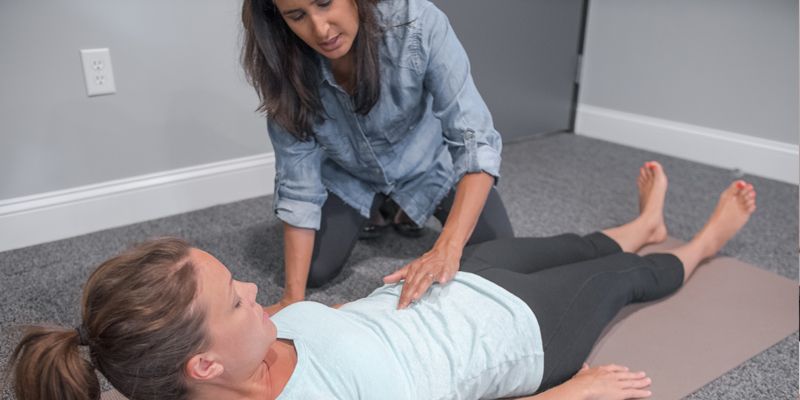
About one-third of Americans will experience some form of chronic pelvic pain over the course of their lives. It is important to understand that chronic pelvic pain is a symptom and may be the result of a number of different diseases or muscular imbalances. Symptoms from pelvic pain can manifest in a variety of ways, depending on the source of the patient’s pain, including urinary urgency, pain while sitting, urethral discomfort, anal numbness, pain during sex, and throbbing aches or burning pain after intercourse. (Note: Some of these symptoms can also occur because of sexually transmitted diseases and we recommend getting screened first to determine if you have an STD as a contributing factor). Sex and sitting are two common activities that can potentially contribute to pelvic pain. Other inciting activities include bike riding, tight clothing, and weight lifting. If the source is bladder-related, dietary choices may have an influence as well. Stress and anxiety can make some pelvic pain conditions worse, creating a self-defeating cycle.
While the conditions that cause pelvic pain can vary widely, the actual physical discomfort is almost always deeply unnerving and scary, especially before there is a diagnosis and a course of treatment has been determined. Many patients describe feelings of hopelessness, isolation, and a tendency towards “catastrophic thinking.” Some fear they will be afflicted with pain forever and that it will ruin their ability to carry on romantic and sexual relationships. Because of the location of the pain, often in and around the genitalia and buttocks, many people have a hard time talking about it with their friends, family, and even their doctors, which can intensify feelings of isolation. Men are believed to have a stronger tendency towards not discussing their pelvic pain—multiple studies have shown that they seek medical assistance less frequently—which may account for the higher reported incidence rates among women. Many pelvic pain conditions cause intermittent discomfort, so the symptoms may “flare up”, for example, at times of high stress.
Chronic pelvic pain can have significant life impacts depending on the conditions behind it, its intensity, and the psychological and social state of the individual patient. In some cases, the pain can be eased by making certain lifestyle changes, such as reducing the amount of time spent sitting over the course of a day. Patients have reported changing their social, sexual, workplace, recreational, and household habits due to pelvic pain. While this is sometimes necessary, the emotional toll of such changes can be great and if, for example, a patient abandons social outings out of fear of pain or shame, the toll will only be more devastating. One 1996 study by Mathias et al. showed that 15 percent of pelvic pain sufferers lost time from paid work and 45 percent reported reduced productivity.1 These life changes can be demoralizing as one likes to feel as though they are changing their life because of an illness.
All the conditions that can cause pelvic pain are too numerous to list in this limited space but, in general, there are two types of diagnoses: Overt medical reasons for pelvic pain and pain related to muscle hypotonicity. Medical reasons include sexually transmitted illnesses, urinary tract infections, and reactions to certain kinds of food or drinks can often be dealt with by simple alterations of diet and pharmaceutical regimens. Muscle hypertonicity describes overly active muscles are being tightened subconsciously and habitually and this cause of pelvic pain is sometimes unknown to urologists and other doctors who are untrained in physical therapy. The unfamiliarity accounts for the unusually high number of physicians many patients see (between 5-7) before their condition is properly assessed and treated. In cases of muscle hypertonicity, medical interventions with medications, trigger point injections, and even surgery can be useful. Outcomes will likely improve if accompanied by frequent appointments with a physical therapist who can both perform proper interventions and train the patient how to do stretches, breathing exercises. and other practices to calm overworked and hyper-tense muscles. For patients who are struggling with the emotional turmoil that often accompanies pelvic pain, psychiatric treatment also can be useful.
If you are struggling with chronic pelvic pain, reach out to the pelvic floor physical therapy experts at Rebalance Physical Therapy. The easiest and most direct way to find relief for your pain is to visit us in-person if you live in or around Philadelphia, PA! If you’re not near Philadelphia, we also offer Telehealth consultations. These Telehealth consults are a way for our therapists to personalize your treatment and give you recommendations and referrals to treat your chronic pelvic pain.
In-Person and Online Consultations


